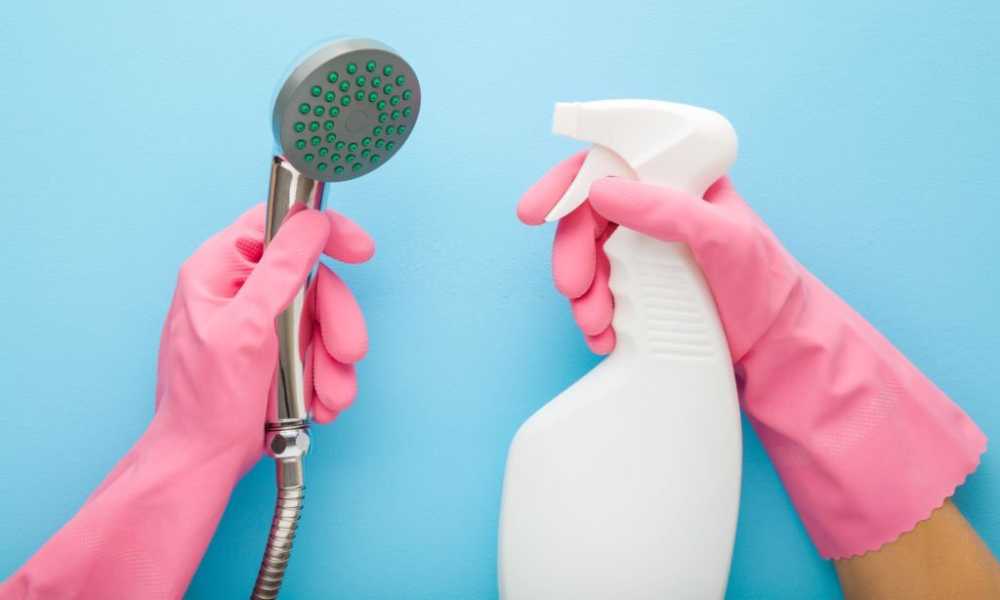Limescale buildup is a common problem in households with hard water. Over time, it can clog up your shower head and reduce the water pressure, leaving you with an unsatisfactory shower experience. Remove limescale from your shower head a simple process that can be done using everyday household items.
In this article, we will provide you with step-by-step instructions on how to remove limescale from your shower head. Whether you’re dealing with a mild case of limescale or a heavily clogged shower head, our guide will help you restore optimal water flow and leave your bathroom feeling fresh and clean. So let’s get started!
What Is A Limescale Shower Head?

A limescale shower head is a common problem in households with hard water. Limescale buildup occurs when minerals from the water accumulate on the surface of the showerhead, causing blockages and reducing water pressure. As a result, your shower experience can be less enjoyable and efficient. Luckily, there are various ways to remove limescale from your shower head.
One simple method to remove limescale is by using vinegar. Fill a plastic bag with white vinegar and attach it to the showerhead using an elastic band or string. Leave it for a few hours or overnight, then remove the bag and run hot water through the showerhead to flush out any remaining residue. Another option is to use lemon juice mixed with baking soda as a natural cleaning solution that can help dissolve mineral buildups effectively.
What is Limescale?
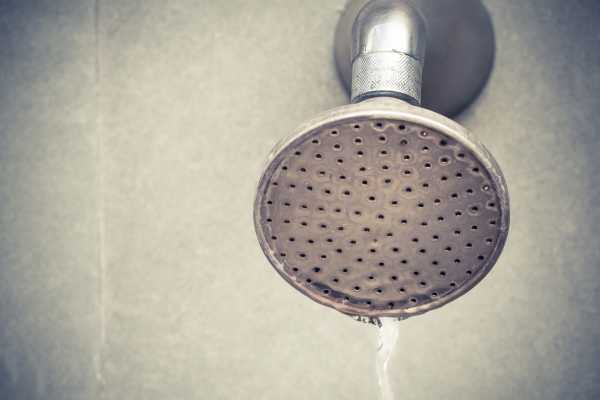
Limescale is a hard, chalky deposit that forms on surfaces exposed to hard water. It’s made up of calcium and magnesium carbonate, which are commonly found in high concentrations in water supplies around the world. Limescale can be unsightly and can accumulate over time, clogging pipes and reducing the efficiency of appliances such as kettles or washing machines.
If you have a shower head that produces weak streams of water or has visible mineral deposits on it, limescale may be the culprit. Fortunately, there are several ways to remove limescale from your shower head. The easiest method involves soaking the showerhead in vinegar overnight to dissolve the minerals. Alternatively, you could use a commercial descaling solution designed specifically for removing limescale buildup from bathroom fixtures. With regular cleaning and maintenance, you can keep your shower head looking and functioning like new for years to come!
How Do You Remove Hard Limescale From A Shower Head?

Hard limescale can be a major headache for homeowners, especially when it accumulates in hard-to-reach areas like showerheads. The buildup of hard water minerals such as calcium and magnesium can cause blockages, reduce water pressure, and even affect the quality of your shower experience. Fortunately, there are several ways to remove limescale from a showerhead without resorting to expensive professional cleaning services.
One popular method is to use vinegar. Simply fill a plastic bag with white vinegar and wrap it around the showerhead so that it is submerged completely. Secure the bag with an elastic band or tape and leave it overnight to allow the vinegar to dissolve the limescale deposits. In the morning, remove the bag and run hot water through the showerhead to rinse off any remaining residue.
Another effective way is to mix baking soda with lemon juice or vinegar until you have a paste-like consistency.
How Do You Decalcify A Showerhead?

Removing limescale from a showerhead is a common problem many homeowners face. Limescale buildup can lead to poor water pressure, unsightly stains, and even clogged nozzles, making it necessary to decalcify your showerhead regularly. Fortunately, there are several ways to do this.
One of the easiest methods is to use vinegar. Fill a plastic bag with white vinegar and attach it securely around the showerhead using an elastic band or rubber band. Leave it for at least an hour before removing the bag and running hot water through the showerhead to rinse off any remaining debris. Another option is to soak your showerhead in a solution of baking soda and water for about 30 minutes before scrubbing away any remaining buildup with a toothbrush.
If you prefer chemical solutions, you can opt for commercial limescale removers that are readily available at hardware stores.
How Do You Remove Limescale From A Chrome Shower?

Limescale is a common problem that occurs in bathrooms and kitchens. If you have a chrome showerhead, then you might be wondering how to remove limescale from it. Limescale is formed by the buildup of mineral deposits that come from hard water. Over time, these deposits can cause your showerhead to become clogged and less effective.
The good news is that there are several methods for removing limescale from a chrome showerhead. One way is to soak the showerhead in vinegar or lemon juice overnight. This will help break down the mineral deposits and make them easier to remove with a soft brush or cloth. Another option is to use a commercial limescale remover product specifically designed for chrome surfaces.
It’s important to keep your showerhead clean and free of limescale buildup so that it functions properly and provides optimal water pressure.
What Is The Best Thing To Remove Limescale From Shower Glass?
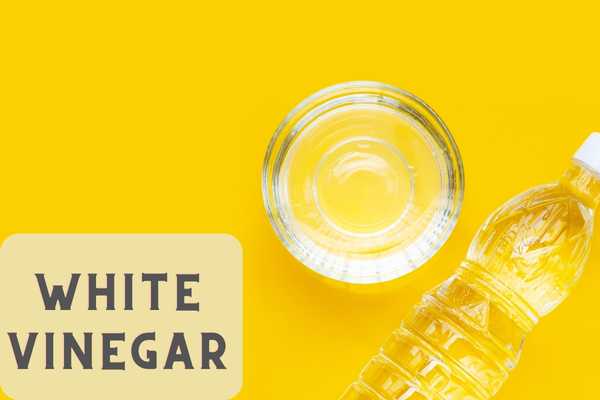
Limescale buildup on shower glass can be a persistent problem that not only looks unsightly but also affects the overall functionality of your bathroom. While many people resort to harsh chemicals to remove limescale from their shower head, there are several natural and effective methods that you can use.
One of the best things you can use to remove limescale from shower glass is white vinegar. Vinegar is a mild acid that effectively dissolves mineral deposits, including limescale. Simply mix equal parts of white vinegar and water in a spray bottle and apply it generously on the affected areas. Leave the solution for at least 15 minutes before rinsing it off with warm water. For stubborn stains, you can also apply undiluted vinegar directly onto the surface and let it sit overnight before cleaning it off with warm water.
How to Clean Your Shower Head of Limescale?
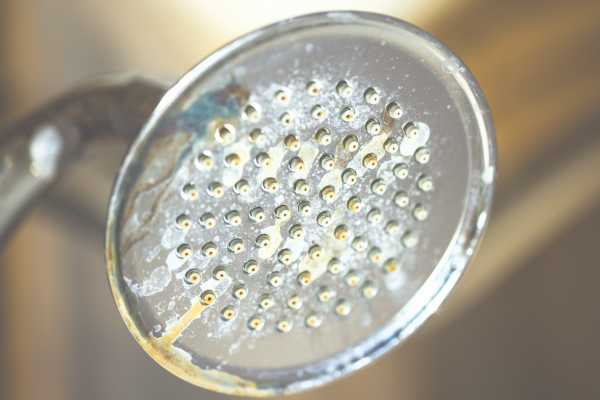
If you’ve noticed that the water pressure from your shower head has decreased or is uneven, it may be due to a buildup of limescale. Limescale is a mineral deposit that can accumulate on your shower head over time, particularly if you live in an area with hard water. Fortunately, removing limescale from your shower head isn’t difficult and can be done using common household items.
Try soaking the shower head in vinegar overnight. To do this, remove the shower head and place it in a bowl filled with white vinegar. This will dissolve any mineral deposits that have built up and should restore your water pressure to normal levels. If the limescale is particularly stubborn, you can use a toothbrush or cotton swab dipped in vinegar to scrub away any remaining residue.
Preparation
Gather Necessary Materials

Removing limescale from your shower head can be a daunting task, but with the right materials and approach, it is achievable. To begin with, you will need to gather some necessary items to make the process smooth and efficient. The first thing you’ll need is white vinegar or lemon juice – these are natural acid cleaners that break down mineral deposits such as limescale.
Next, you will require a plastic bag or ziplock bag that is large enough to fit over your showerhead. You can also use a rubber band to secure the bag in place. A soft-bristled brush such as an old toothbrush will come in handy when scrubbing away any stubborn limescale deposits on your showerhead.
Additionally, it’s essential to have a pair of gloves and safety glasses on hand for protection when handling cleaning agents.
Importance Of Maintaining A Clean Showerhead
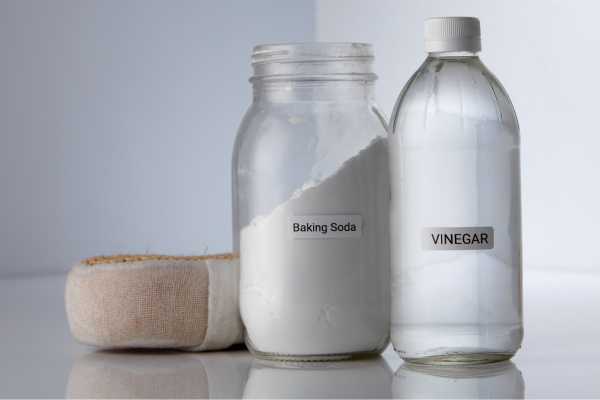
Maintaining a clean showerhead is an essential aspect of good hygiene. Not only does it enhance the aesthetics of your bathroom, but it also ensures that you are using clean water to bathe. Over time, mineral deposits such as limescale can clog up your showerhead and cause reduced water pressure and uneven distribution of water flow.
The best way to prevent limescale buildup is by regularly cleaning your showerhead. There are several methods for removing limescale from a shower head, including vinegar, baking soda, and commercial descaling products. Vinegar works effectively by dissolving the mineral deposits without causing any damage to the metal or plastic parts of your showerhead. Baking soda mixed with water can be used as a scrubbing agent to remove stubborn stains and buildup on the surface of the showerhead.
The Problem of Limescale Buildup
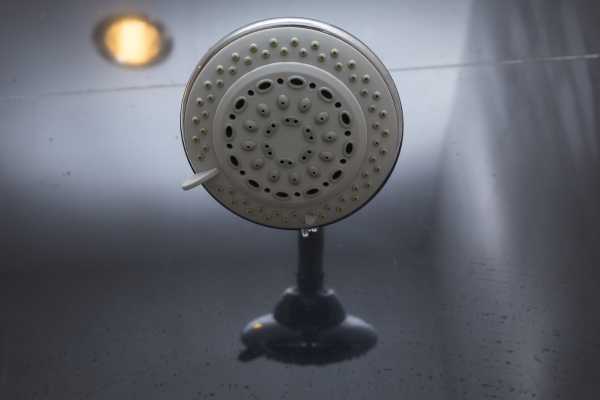
Limescale buildup is a common problem in many households and can be quite frustrating to deal with. Over time, minerals such as calcium and magnesium can accumulate on various surfaces. Leaving behind unsightly white stains that are difficult to remove. One area where limescale buildup is particularly prevalent is the shower head.
If your shower head has become clogged with limescale. It can lead to poor water pressure and even damage to the fixture itself. Fortunately, there are several effective methods for removing limescale buildup from your shower head. One popular method involves soaking the fixture in a solution of equal parts vinegar and water for several hours before scrubbing away any remaining residue with a toothbrush.
Another option is to use a specialized limescale removal product that is specifically designed for use on bathroom fixtures.
Effects of Limescale

Limescale is a common problem that many households face, especially in areas with hard water. Limescale buildup can occur on various surfaces, including shower heads, faucets, and kettles. This mineral deposit can have several negative effects on your plumbing system and appliances.
One of the most significant effects of limescale is reduced water flow. The buildup can restrict the flow of water through pipes and showerheads, resulting in weak showers or slow-filling bathtubs. Additionally, limescale can lead to corrosion in pipes and faucets over time, leading to leaks and other plumbing issues that could be expensive to repair.
Fortunately, removing limescale from your showerhead is relatively straightforward. Using a descaler solution or vinegar can dissolve the buildup and restore proper water flow.
Ensure Safety Measures

Maintaining a clean and hygienic shower is essential to ensure the safety of your household. One issue that often goes unnoticed is limescale buildup in showerheads, which can lead to blockages and inefficiencies. While it may seem like a minor inconvenience, limescale buildup can result in uneven water pressure, decrease the lifespan of your showerhead, and even pose health risks.
Fortunately, removing limescale from your showerhead is a straightforward process that requires minimal effort. The most effective way to remove limescale is by soaking the affected area in vinegar overnight or for several hours. The acidic properties of vinegar work wonders on dissolving the mineral deposits left behind by hard water. Alternatively, you can use baking soda mixed with water as a scrubbing agent to remove stubborn buildup.
Removing The Shower Head

If you’re experiencing a weak water flow from your shower head, it could be due to the buildup of limescale. Over time, mineral deposits from the water can accumulate on the shower head and cause blockages which can affect water pressure. Fortunately, removing limescale from a shower head is an easy task that can be done with some basic tools and materials.
The first step in removing limescale from your shower head is to turn off the water supply to ensure that no water is flowing through the pipes. Once this has been done, use a wrench or pliers to loosen and remove the nut holding the shower head in place. Be sure to wrap a cloth around the shower arm before using any tools to prevent damage or scratches.
After removing the shower head, fill a plastic bag with white vinegar enough to completely submerge it.
Turn Off The Water Supply

If you are experiencing low water pressure or a lack of hot water in your shower, it may be because your showerhead is clogged with limescale buildup. Limescale is a white, chalky substance that can accumulate on the surface of appliances and fixtures that come into contact with hard water. This mineral deposit can cause damage to your plumbing system if left untreated for too long, which is why it’s essential to remove limescale from your showerhead on a regular basis.
To remove the limescale from your showerhead, the first step is to turn off the water supply. This will prevent any excess water from dripping onto the floor or getting you wet while trying to clean the showerhead. Once you have turned off the water supply, remove the showerhead from its fixture and place it in a bowl of vinegar solution.
Prepare a Vinegar Solution
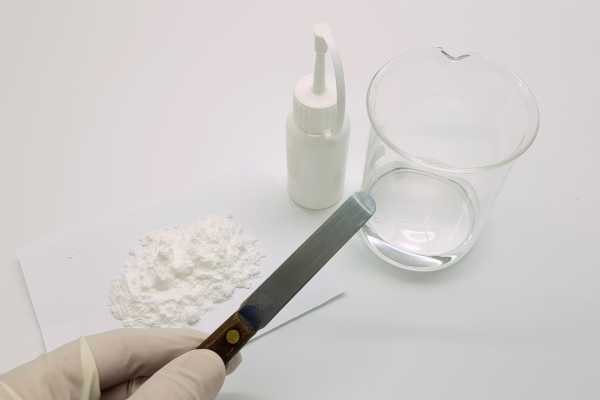
Hard water can cause limescale buildup in your showerhead, which not only looks unsightly but also reduces water pressure and flow. Fortunately, there’s a simple solution to this problem that you can make at home: vinegar. Vinegar is an acidic solution that can break down mineral deposits and dissolve limescale with ease.
To prepare a vinegar solution for removing limescale from your showerhead, start by filling a plastic bag with white vinegar and securing it over the showerhead with an elastic band or twist tie. Make sure the showerhead is fully submerged in the vinegar so that all parts are covered. Leave it to soak overnight or for at least a few hours, depending on how severe the buildup is.
Once you’ve soaked the showerhead in vinegar, remove the bag and use a soft-bristled brush or cloth to gently scrub away any remaining residue.
Scrubbing and Rinsing

Scrubbing and rinsing are essential techniques to remove limescale from a showerhead. Limescale is a hard, chalky deposit that forms on surfaces that come into contact with hard water. Over time, limescale can build up in a showerhead, reducing the flow of water and affecting its performance.
To remove limescale from a showerhead, first, you need to scrub it using an appropriate cleaner. There are several commercial cleaners available in the market specifically designed for removing limescale. Alternatively, you can make your own cleaning solution by mixing equal parts of vinegar and water. Dip an old toothbrush or scrub brush into the cleaning solution and scrub the showerhead thoroughly to remove any buildup.
After scrubbing, rinse the showerhead with clean water to get rid of any remaining residue or cleaning solution.
Reassembling and Testing
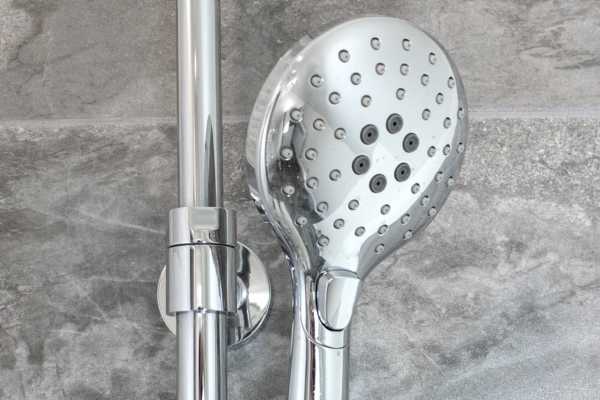
Reassembling and testing a shower head after removing limescale is an essential task that needs to be done with precision. Limescale buildup can lead to clogged nozzles and reduce the water flow, making your shower experience less enjoyable. Therefore, it’s crucial to remove limescale from your showerhead regularly.
Once you have removed the limescale from your showerhead, you need to reassemble it correctly. Before starting, make sure all the parts are clean and dry. Then, follow the manufacturer’s instructions or refer back to any notes you may have taken when disassembling it. Tighten each part firmly but gently; overtightening can cause damage or leaks in some cases.
After reassembling your showerhead, it’s time for testing. Turn on the water supply and check if there are any signs of leakage or reduced water flow rate.
Dry the Shower Head Components

If you’re experiencing low water pressure from your showerhead. One of the likely causes is limescale buildup. Limescale is a white mineral deposit that accumulates on surfaces exposed to hard water. Its presence can be frustrating because it clogs the small nozzles in your showerhead, which reduces the flow of water.
Removing limescale from your showerhead will help restore its efficiency. One practical way to do this is by disassembling it and soaking each component in vinegar or another acidic solution. However, after removing the limescale, you’ll need to ensure that all parts are dry before reassembling them.
Drying all components of your showerhead after cleaning is crucial as moisture could cause rusting or mold growth later on.
Prevention Tips

Limescale buildup on showerheads is not only unsightly but can also reduce water flow and even result in clogs. Fortunately, there are several simple and effective prevention tips to keep your showerhead free from limescale.
One way to prevent limescale buildup is to use a water softener or a filter that removes hard minerals such as calcium and magnesium from the water. This will significantly reduce the amount of limescale that forms on your showerhead over time. Alternatively, you can try soaking your showerhead in vinegar or lemon juice overnight to dissolve any existing limescale deposits.
Another important prevention tip is to regularly clean your showerhead with a mild detergent or soap and warm water. Be sure to rinse thoroughly afterward and dry the surface completely using a soft cloth.
Regular Cleaning Routine
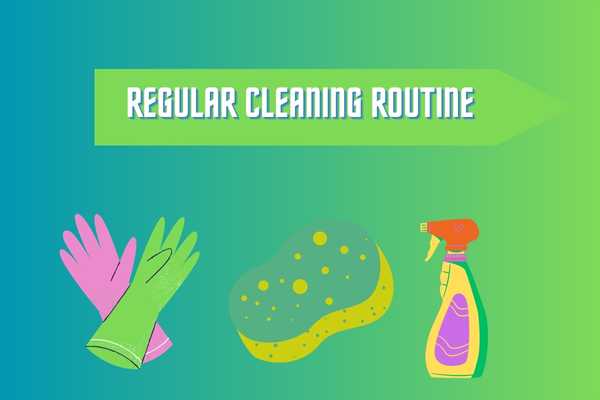
Regular cleaning is essential to maintain the hygiene and functionality of various household appliances, including shower heads. Limescale buildup is a common problem that affects shower heads over time and can lead to reduced water flow and unsightly stains. It is crucial to remove limescale regularly to ensure optimal performance and prolong the lifespan of your shower head.
Fortunately, there are several effective methods for removing limescale from a shower head. One approach involves using a descaling solution specifically designed for this purpose. These solutions contain acids that dissolve mineral deposits such as calcium carbonate, which is the main component of limescale. Another option is to create a homemade solution by mixing equal parts white vinegar and water in a spray bottle. Simply spray the solution onto the shower head, let it sit for 20-30 minutes, then rinse thoroughly with water.
Turn On the Water Supply and Check for Proper Functioning
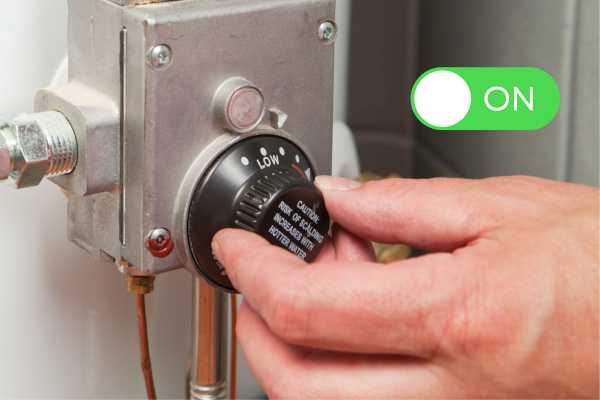
When it comes to ensuring an efficient shower experience, the importance of a clean and functioning showerhead cannot be denied. Over time, minerals present in hard water build up inside the showerhead. Leading to limescale accumulation that can clog the tiny holes. This not only affects the pressure and flow of water but also causes uneven spray patterns. To prevent these issues, removing limescale from your showerhead is crucial.
Before attempting to remove limescale from your showerhead, it is essential to turn off both hot and cold water supplies. Next, detach the showerhead from its arm by turning it counterclockwise. Inspect the head for any visible deposits or debris that may have accumulated on its surface. This inspection will help you determine if you need a heavy-duty cleaning agent or just vinegar and baking soda solution for mild buildup.
Conclusion
In conclusion, limescale buildup on shower heads can be a frustrating and unsightly issue that can affect the water pressure and quality of your showers. However, there are several simple methods for removing limescale buildup from shower heads without needing to replace them altogether. From using vinegar and baking soda to more specialized cleaning solutions, each of these methods is effective in its own way. With regular cleaning and maintenance, you can prevent limescale buildup and keep your shower head functioning at its best. Don’t let limescale get you down- try these methods today to restore your shower head’s performance and enjoy a refreshing shower experience!
